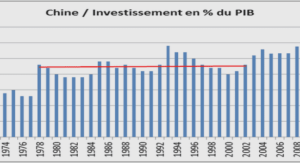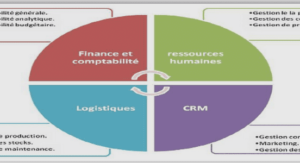A CONTRASTIVE STUDY OF ADJECTIVESIN ENGLISH AND DIOLA FOGNY
The study of two languages in contrast, here called contrastive analysis, has been referred to by a variety of names not all of which mean the same to all writers. One can find the following terms: contrastive studies, contrastive language studies, contrastive linguistics, contrastive description and others. The term contrastive is also used with studies of particular levels and functional areas of the linguistic system, such as generative grammar as well as contrastive discourse analysis, contrastive rhetoric and many more. Because of this variety of names and variety of interpretations of what constitutes the proper subject matter and approach to the various related areas, any attempt to bring order to what is known as contrastive analysis is very much a compromise.
The Diola live on either side or near the mouth of Casamance River in the region of Senegal, West Africa, known as Basse-Casamance. There are approximately 2OO,000 Diola subdivided into ten groups, eight of which are found on the left and two on the right bank of the river. The majority of the Diola lives in small independent villages and practice wet-rice cultivation. The language is spoken by more than 3, OOO, OOO people including all dialects scattered around Bissau Guinea, Gambia and Senegal. Fogny Diola corresponds to the ethnic subgroup of the same name based in the Bignona area. This dialect is understood by practically all Diola, even the Senegalese national radio uses Fogny in its Diola languageAs far as English language is concerned it is an Indo-European language like French and many other languages belonging to the western Germanic branch. Its area of widespread goes far beyond the British Isles. Several countries such as the United States of America, Great Britain, Australia, Canada, Republic of Ireland, New Zealand, Jamaica, South Africa use English as their mother tongue. Other areas of the globe use it as their second language( after the mother tongue) particularly in English speaking African countries ( Gambia, Nigeria …), or again as a language of communication acquired in the field of school education ( in curricula) in countries like Ivory Coast and Senegal; and the latter aspect motivated ourOur theoretical approach of linguistic analysis is a functional one .It has much to do with the description of the two languages the first task being then the gathering of sampled utterances that is to say a corpus that will constitute the subject of the study.
Contrastive study emerges then as a major linguistic tool in the context of teaching and learning of languages to enable communication. It involves reconciling the grammatical description of English and Diola Fogny adjectives, contribute to future thought. The learner is likely to transfer rules about internalized from the learning of his (her) native language to a foreign or second language, and that mistakes in the latter were due to this inappropriate transference. With the emphasis on teaching put forward, cultural as well as linguistic influences from one language to another one resulting in linguistic behaviour, namely in writing, that may be appropriate or unacceptable for cultural reasons than being linguistically incorrect. Through a prior contrastive analysis of the use of adjectives in English and Diola Fogny, one could therefore prevent development of errors, leading to the development of appropriate teaching materials to reinforce correct language learning which is, in fact, the main purpose of this paper.
Diola Fogny classifiers
The noun class markers are grouped into singular-plural pairs, collective, mass, abstract, infinitive, semiA-nominal and adverbial markers. A glance at the structure of nouns and all constituents of speech of the language clearly shows the extensive use, beyond the behaviour of adjectives to which classifiers can be put. The entire group of class markers can be fullyIt is not necessary to do an overall presentation of classifier system of the language; the principle is to select essential and basic items that can be useful to our topic. So, we are going to present twelve main classifiers in the followings.The qualification by adjectives is a noticeable matter to the reader resulting from the action of the latter and their behaviour that is to say their context of occurrence in the noun phrase. Through an immediate and divided intuition, any speaker knows how to differentiate a noun and an adjective. Still, it is very difficult to specify perfectly this intuition. Nothing distinguishes determiners, adjectives and nouns when one takes them as markers. As units of the language, they all are abstract and potential; and the speaker is likely to use and actualize them in the discourse anytime he wishes to show and adapt them to a person, quantify, count, or even denominate properties.As markers, they are all equal and do not distinguish from other markers such as conjunctions, adverbs and verbs. Everything changes when one put to question the purpose in which theLearning English adjectives is very important since their structure is used in all daily conversations. The only solution is to master the grammar and vocabulary so as to speak fluently the language. But, first of all, we have to know the role of adjectives in English utterance.
Descriptive adjectives
Adjectives are the descriptive words used in English language to describe something or some person. They are among the eight parts of speech. Adjectives are added to nouns to describe the colour, number and kind. The sentences are made very clear by adding descriptive adjectives. They help in identifying the words.Adjectives are of different types namely possessive adjectives, demonstrative adjectives and indefinite adjectives. Descriptive adjectives are the largest among four types of adjectives. These are mainly divided into three categories. The first are simple adjectives which function to express quality, quantiy, feelings, sounds, taste, size, appearance, age, colour, shape and material etc.However combining an adverb (usually a word ending with “ly”), an adjective does not create a compound adjective. No hyphen is required because it is clear that the adverb modifies the adjective rather than the subsequent noun.




